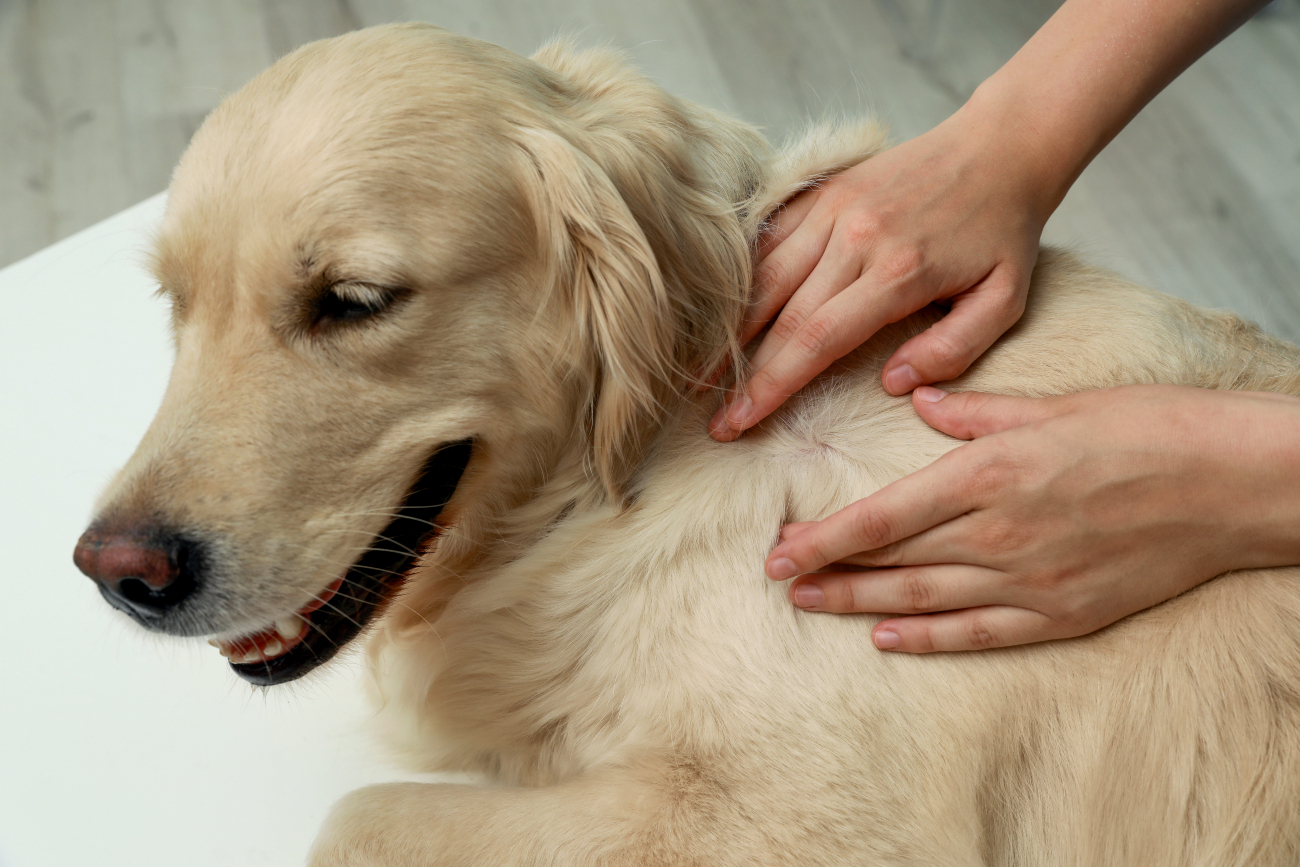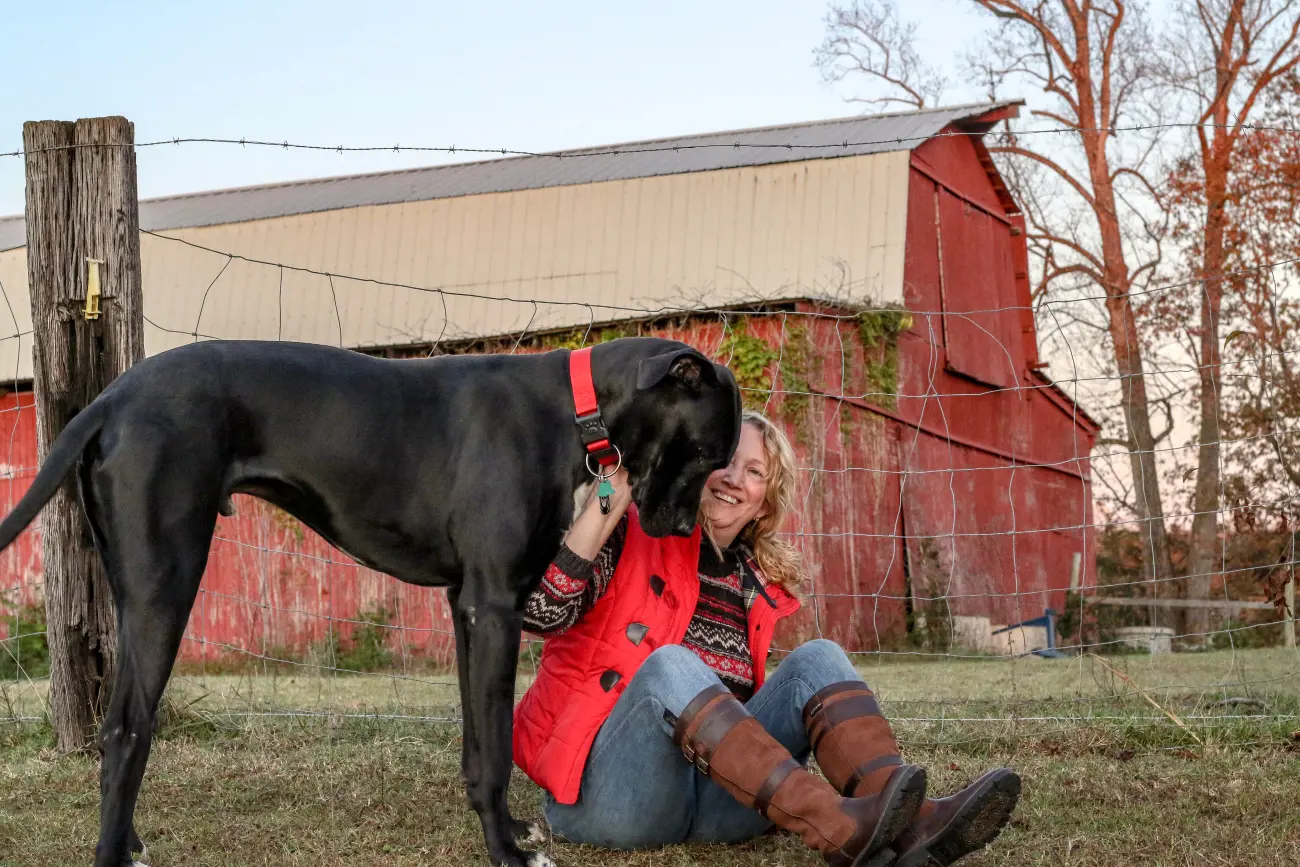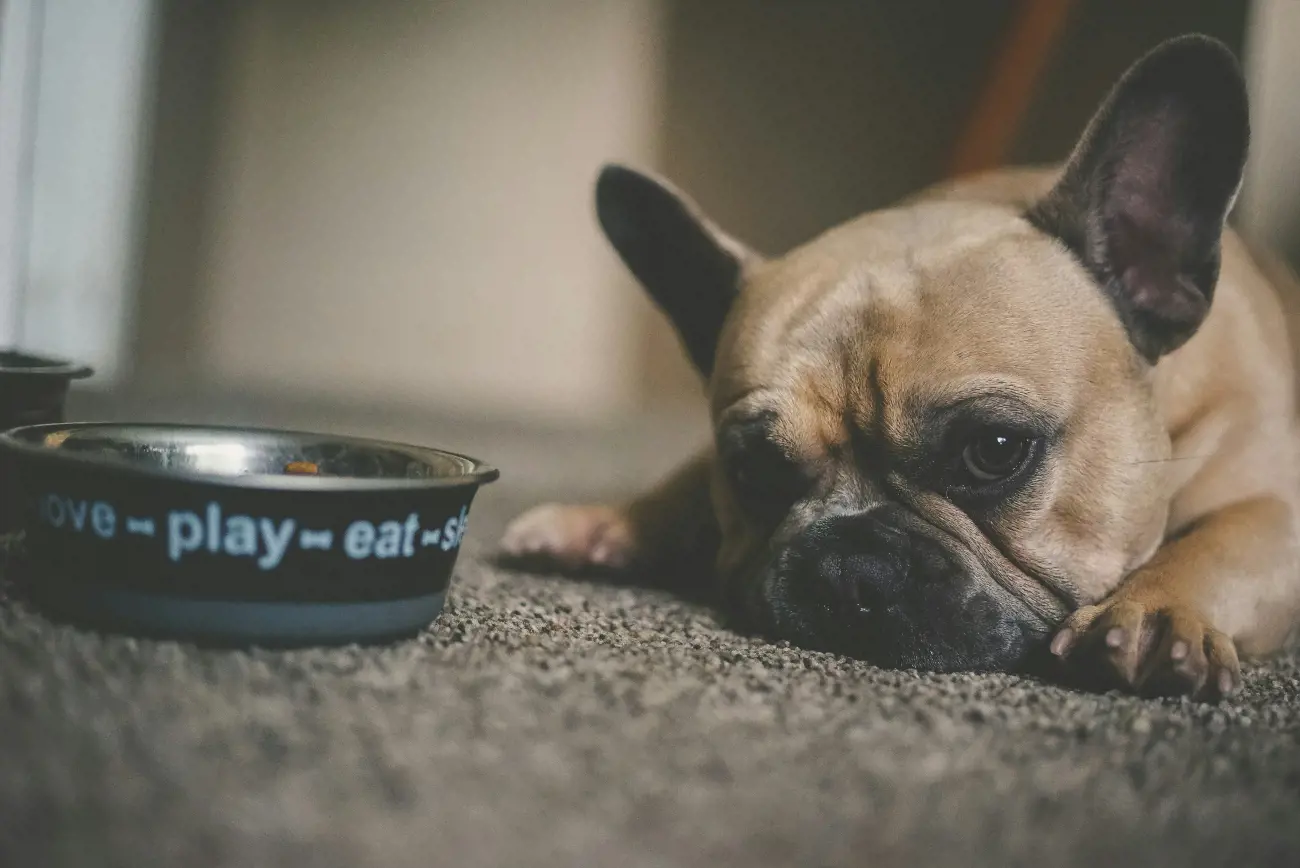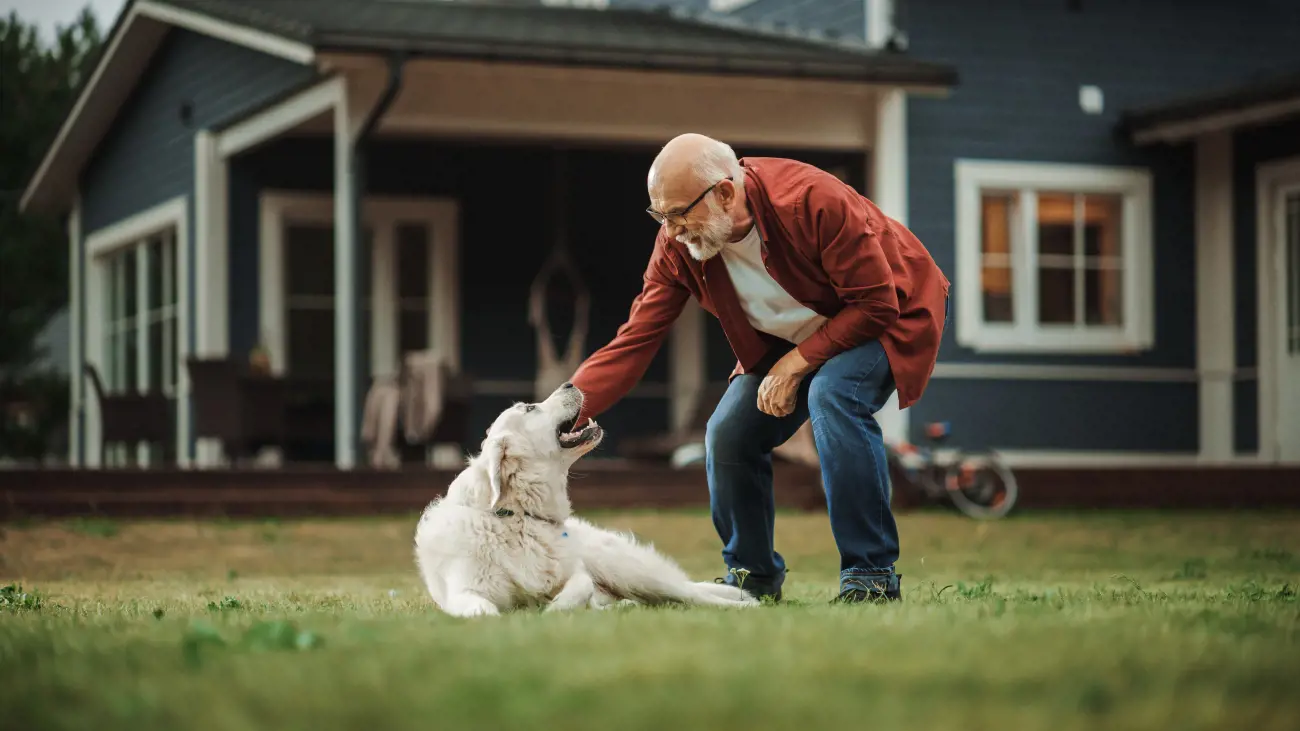Understanding skin lumps on cats & dogs: Causes, symptoms, and treatment options
1st July, 2024

What are skin lumps on cats and dogs?
A skin lump usually refers to an area of skin that is raised or misshapen. The cause may be on the skin itself or underneath. Sometimes this can be caused by an infection (abscess), allergic reaction or trauma, but the term “skin lump” is normally used when there is an abnormal growth or mass present.
In dogs the majority of skin growths are benign (see more below), but in cats around 50% of skin growths are cancerous, so it is especially important to be vigilant.
A skin lump should always be checked by a vet, especially if it’s rapidly growing, sore, or changing in texture or consistency on any part of the cat's body.
Types of skin lumps
There are many different types of skin lumps, but the most important factor is whether they are benign or malignant skin tumours.
Benign lumps
These benign tumours usually grow in a single location and don’t affect other organs. They can still cause problems depending on size and location but can often be cured with surgery. Examples are:
- Lipomas or fatty lumps, which grow in the fat under the skin. Usually soft and mobile, they can still grow to very large sizes and cause discomfort. In rare cases they can start growing into the muscle and become very difficult to remove.
- Sebaceous cysts develop in the sweat glands under the skin and produce thick, dark discharge. If these rupture under the skin they cause a lot of inflammation.
- Warts and skin tags develop from the skin and should cause no changes under the skin. These may sometimes fall off on their own and rarely cause problems but can become infected if traumatised.
- Basal cell tumours are common in older cats. These are firm, hairless masses that grow from the skin. 90% are benign but can still grow to very large sizes and may cause a lot of inflammation.
Mast cell tumours: Malignant lumps
Malignant tumours are cancerous and aggressive, often damaging the surrounding tissues and spreading to other organs. They can also produce substances that affect metabolism and disrupt essential body functions, making cancerous tumours particularly dangerous. Common examples are:
- Squamous cell carcinomas (SCC) are aggressive growths on the top layer of the skin. These are most common in areas with little hair (ears, nose, lips) and are more common in cats with mostly white coat. Exposure to UV rays from the sun is thought to be a significant risk factor.
- Mast cell tumours are an unfortunately common type of cancer in dogs. They come from immune system cells within the skin, and tend to cause a lot of inflammation, itching and discomfort. In rare cases they can suddenly release large amounts of histamine, causing a generalised reaction similar to an allergic crisis.
- Fibrosarcomas are another common type of cancer, especially in the mouth. They come from deeper in the skin and infiltrate into the surrounding tissues very quickly and aggressively, which causes a lot of damage and makes treatment very difficult.
Causes and risk factors
Causes and risk factors vary between different types of lumps.
- Warts can be caused by a virus, especially in young dogs.
- Genetic predispositions are suspected in many tumours, and some skin lumps are more common in specific breeds, for example Boxers or Siamese.
- Most types of tumours become more likely as the animal ages.
- As mentioned above, exposure to UV radiation increases the risk of skin lumps, especially SCC.
Identifying skin lumps : Fine needle aspirate
Confirming with certainty what a lump is requires testing, but the appearance and feel of a lump can provide a lot of clues to the trained eye. Always ask your veterinarian to check any lumps you find on your pet. They will help you evaluate any signs that may be cause for concern, such as:
Changes in size or texture
- Inflammation
- Irritation
- Itching
- Discharge
- Swelling of lymph nodes in the area
- Changes to surrounding structures
Many skin lumps can be diagnosed with a simple test called a fine needle aspirate. This involves obtaining a few microscopic samples of a lump with a needle and checking what cells are present. This provides enough information to make clinical decisions in 60-70% of cases.
When more information is required or cancer is suspected, a biopsy is the next step. This involves removing a portion of the lump, usually during surgery, and examining it under the microscope. This almost always determines what kind of tumour is present, and if it is cancerous or not.
More advanced tests, like immunofluorescence or genetic typing, can be performed in specific cases. These are likely to become more useful in the future, as we learn more about what characteristics of a tumour determine how it will respond to treatment.
Treatment and management
The primary treatment for the vast majority of skin lumps is surgical removal. In smaller and localised lumps this will often be all that is needed. How much tissue needs to be removed depends on the type of lump present, and whether it involves connective tissue. Usually, a margin of a few centimetres around the lump is taken to make sure nothing is left behind.
In specific cases an alternative to standard surgery may be used, such as cryotherapy (cold surgery) for warts or injecting medication into the tumour to kill it in place (sometimes used in inoperable mast cell tumours).
When the lump is too large to be removed surgically, radiation treatment can be used to shrink it enough for surgery to become possible.
Radiation therapy is also an option when the tumour is in a location where surgery is not possible, or to prevent regrowth of a tumour that wasn’t completely removed, ensuring no tumour cells remain.
Another option for inoperable or incompletely removed tumours is chemotherapy, where strong medications are given by tablet or injection to kill the tumour cells in place. This is usually the only treatment option if the tumour has already spread. Side effects are common, but in some cases, it may be possible to achieve cure.
A final option when a tumour can’t be cured is to use low doses of chemotherapy or other medications to stall the tumour growth, when successful this may maintain the pet’s quality of life for extended periods.
Managing lumps and bumps
Treatment for all conditions, especially skin lumps, is more effective and safer when started early. Always have your vet assess any lumps or bumps to see if investigations and treatment are advised.
Even if there are no concerns initially, monitor any skin lumps regularly and discuss any changes with your vet.
Regular grooming and skin checks are an opportunity for bonding and may allow you to spot any changes earlier.
Avoiding excessive sun exposure may be advisable, especially in white cats or those with thinly haired ears. If you notice your cat’s ears or face becoming a brighter shade of pink after being outside or lounging in the sun, you may need to manage their exposure. There are also sun-barrier ointments available that can offer additional protection. Make sure to use a safe and effective product.
Helpful Pages
Recent Posts

Why do Great Danes bury their heads?
12/03/25
Find out more about Beagles
28/02/25
How much chocolate can a dog eat?
28/02/25Pet Insurance Quote
- 98% claims paid *
- Claims paid directly to vets
- 24/7 vet video consultations
- Interest free monthly payments

